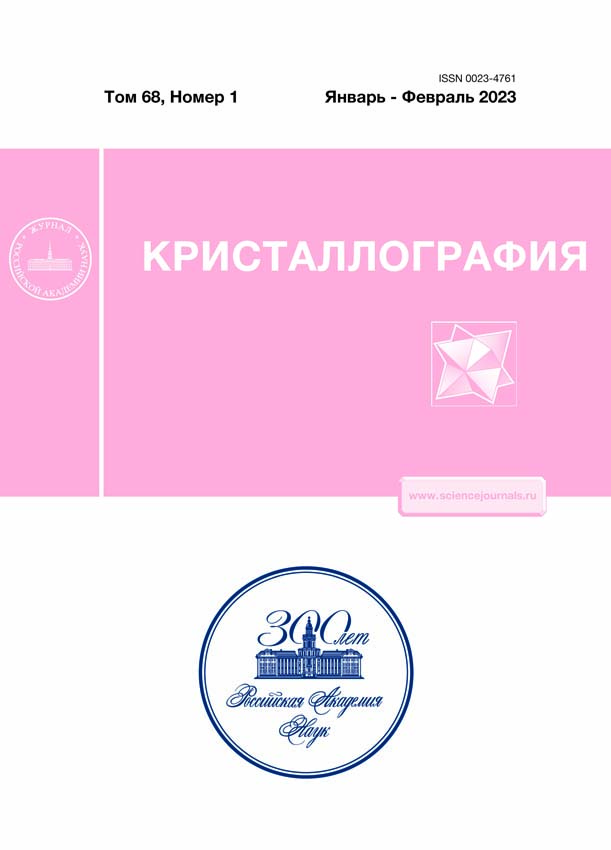Preparation, Crystallization, and Preliminary X-ray Diffraction Analysis of Recombinant House Dust Mite Allergen Der p 3 from Dermatophagoides pteronyssinus
- Authors: Timofeev V.I.1,2, Abramchik Y.A.1,3, Zhukhlistova N.E.1, Mikheeva O.O.3, Shevtsov M.B.4, Zayats E.A.3, Lykoshin D.D.3, Kostromina M.A.3, Esipov R.S.3, Kuranova I.P.1,2
-
Affiliations:
- Shubnikov Institute of Crystallography of Federal Scientific Research Centre “Crystallography and Photonics,” Russian Academy of Sciences, 119333, Moscow, Russia
- National Research Centre “Kurchatov Institute,”, 123098, Moscow, Russia
- Shemyakin−Ovchinnikov Institute of Bioorganic Chemistry, Russian Academy of Sciences, 117997, Moscow, Russia
- Moscow Institute of Physics and Technology, 141701, Dolgoprudny, Moscow oblast, Russia
- Issue: Vol 68, No 1 (2023)
- Pages: 46-50
- Section: STRUCTURE OF MACROMOLECULAR COMPOUNDS
- URL: https://rjdentistry.com/0023-4761/article/view/673539
- DOI: https://doi.org/10.31857/S0023476122060273
- EDN: https://elibrary.ru/DMUZXL
- ID: 673539
Cite item
Abstract
The high-producing strain С3029/pGro7/pERDerp3 for the house dust mite allergen Der p 3 from Dermatophagoides pteronyssinus, expressing the recombinant protein in Escherichia coli in the soluble form, was constructed. A procedure was developed for the purification of the recombinant allergen. Crystals of the recombinant protein Der p 3 suitable for X-ray diffraction analysis were grown by the vapor-diffusion method. The X-ray diffraction data set was collected to 2.25 Å resolution at the European Synchrotron Radiation Facility (ESRF, France, ID23-1 beamline) at 100 K. The crystals belong to sp. gr. С121 and contain two enzyme molecules per asymmetric unit.
About the authors
V. I. Timofeev
Shubnikov Institute of Crystallography of Federal Scientific Research Centre “Crystallography and Photonics,” Russian Academy of Sciences, 119333, Moscow, Russia; National Research Centre “Kurchatov Institute,”, 123098, Moscow, Russia
Email: inna@crys.ras.ru
Россия, Москва; Россия, Москва
Yu. A. Abramchik
Shubnikov Institute of Crystallography of Federal Scientific Research Centre “Crystallography and Photonics,” Russian Academy of Sciences, 119333, Moscow, Russia; Shemyakin−Ovchinnikov Institute of Bioorganic Chemistry, Russian Academy of Sciences, 117997, Moscow, Russia
Email: inna@crys.ras.ru
Россия, Москва; Россия, Москва
N. E. Zhukhlistova
Shubnikov Institute of Crystallography of Federal Scientific Research Centre “Crystallography and Photonics,” Russian Academy of Sciences, 119333, Moscow, Russia
Email: inna@crys.ras.ru
Россия, Москва
O. O. Mikheeva
Shemyakin−Ovchinnikov Institute of Bioorganic Chemistry, Russian Academy of Sciences, 117997, Moscow, Russia
Email: inna@crys.ras.ru
Россия, Москва
M. B. Shevtsov
Moscow Institute of Physics and Technology, 141701, Dolgoprudny, Moscow oblast, Russia
Email: inna@crys.ras.ru
Россия, Долгопрудный
E. A. Zayats
Shemyakin−Ovchinnikov Institute of Bioorganic Chemistry, Russian Academy of Sciences, 117997, Moscow, Russia
Email: inna@crys.ras.ru
Россия, Москва
D. D. Lykoshin
Shemyakin−Ovchinnikov Institute of Bioorganic Chemistry, Russian Academy of Sciences, 117997, Moscow, Russia
Email: inna@crys.ras.ru
Россия, Москва
M. A. Kostromina
Shemyakin−Ovchinnikov Institute of Bioorganic Chemistry, Russian Academy of Sciences, 117997, Moscow, Russia
Email: inna@crys.ras.ru
Россия, Москва
R. S. Esipov
Shemyakin−Ovchinnikov Institute of Bioorganic Chemistry, Russian Academy of Sciences, 117997, Moscow, Russia
Email: inna@crys.ras.ru
Россия, Москва
I. P. Kuranova
Shubnikov Institute of Crystallography of Federal Scientific Research Centre “Crystallography and Photonics,” Russian Academy of Sciences, 119333, Moscow, Russia; National Research Centre “Kurchatov Institute,”, 123098, Moscow, Russia
Author for correspondence.
Email: inna@crys.ras.ru
Россия, Москва; Россия, Москва
References
- Murphy K., Weaver C. // Janeway’s Immunobiology. 2017. 9th Edition. Garland Science, Taylor & Francis Group. 927 p.
- Bousquet P.-J., Chinn S., Janson C. et al. // European Community Respiratory Health Survey I. Allergy. 2007. V. 62. P. 301. https://doi.org/10.1111/j.1398-9995.2006.01293.x
- Gaffin J.M., Phipatanakul W. // Curr. Opin. Allergy Clin. Immunol. 2009. V. 9. P. 128. https://doi.org/10.1097/aci.0b013e32832678b0
- Gaffin J.M., Spergel J.M., Boguniewicz M. et al. // Allergy Asthma Proc. 2012. V. 33. P. 282. https://doi.org/10.2500/aap.2012.33.3572
- Cox L., Nelson H., Lockey R. et al. // J. Allergy Clin. Immunol. 2011. V. 127 (1 Suppl.). P. S1–55.
- Thomas W.R. // J. Allergy Clin. Immunol. 2011. V. 127. P. 855. https://doi.org/10.1016/j.jaci.2010.12.1084
- Pauli G., Malling H.J. // Curr. Top Microbiol. Immunol. 2011. V. 352. P. 43. https://doi.org/10.1007/82_2011_125
- Gregory L.G., Lloyd C.M. // Trends Immunol. 2011. V. 32. P. 402. https://doi.org/10.1016/j.it.2011.06.006
- Hales B.J., Martin A.C., Pearce L.J. et al. // J. Allergy Clin. Immunol. 2006. V. 118. P. 361. https://doi.org/10.1016/j.jaci.2006.04.001
- Weghofer M., Thomas W.R., Kronqvist M. et al. // Eur. J. Clin. Invest. 2008. V. 38. P. 959. https://doi.org/10.1111/j.1365-2362.2008.02048.x
- King C., Brennan S., Thompson P.J., Stewart G.A. // J. Immunol. 1998. V. 161. P. 3645.
- Sun G., Stacey M.A., Schmidt M. et al. // J. Immunol. 2001. V. 167. P. 1014. https://doi.org/10.4049/jimmunol.167.2.1014
- Lin Y.-P., Nelson C., Kramer H., Parekh A.B. // Mol. Cell. 2018. V. 70 (2). P. 228. https://doi.org/10.1016/j.molcel.2018.03.025
- Ivanciuc O., Schein C.H., Braun W. // Bioinformatics. 2002. V. 18. № 10. P. 1358. https://doi.org/10.1093/bioinformatics/18.10.1358
- Battye T.G., Kontogiannis L., Johnson O. et al. // Acta Cryst. D. 2011. V. 67. P. 271. https://doi.org/10.1107/S0907444910048675
- Smith W.A., Thomas W.R. // Clin. Exp. Allergy. 1996. V. 26. P. 571.
- Bouaziz A., Walgraffe D., Bouillot C. et al. // Clin. Exp. Allergy. 2015. V. 45. P. 823. https://doi.org/10.1111/cea.12452
Supplementary files













